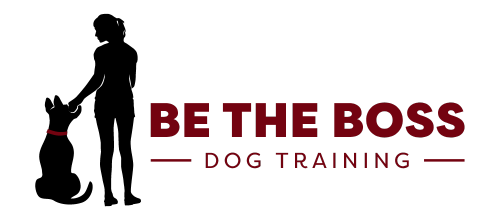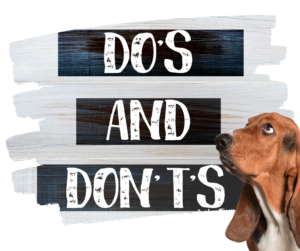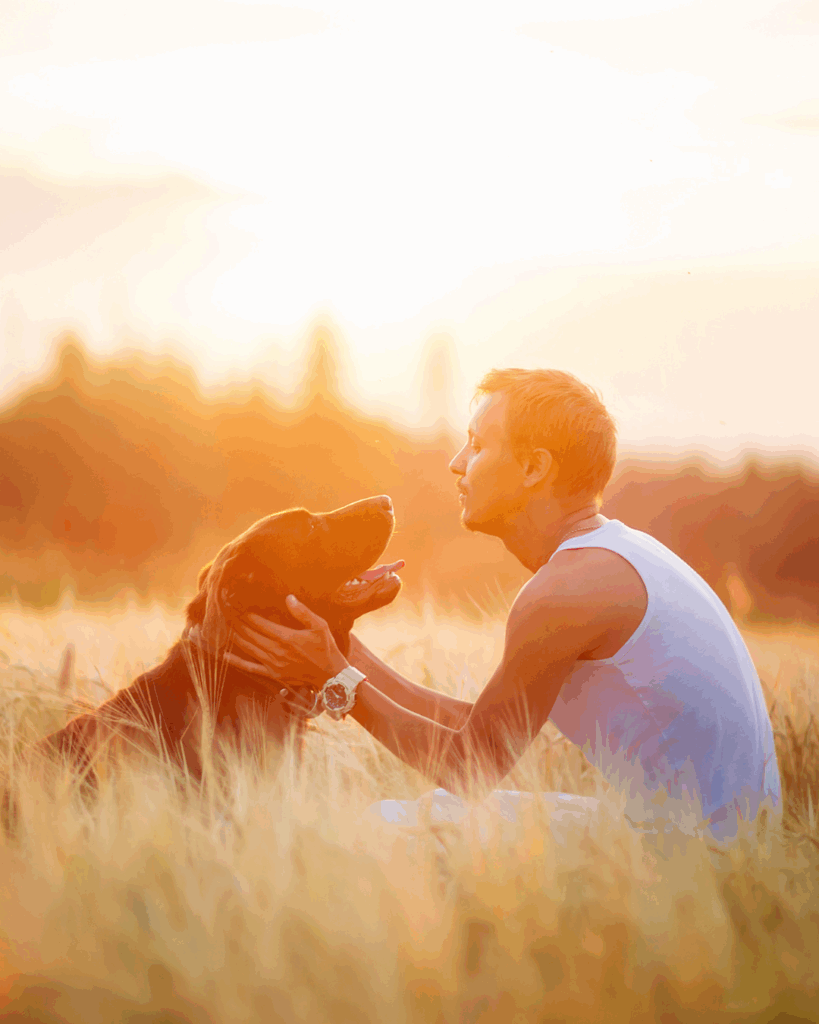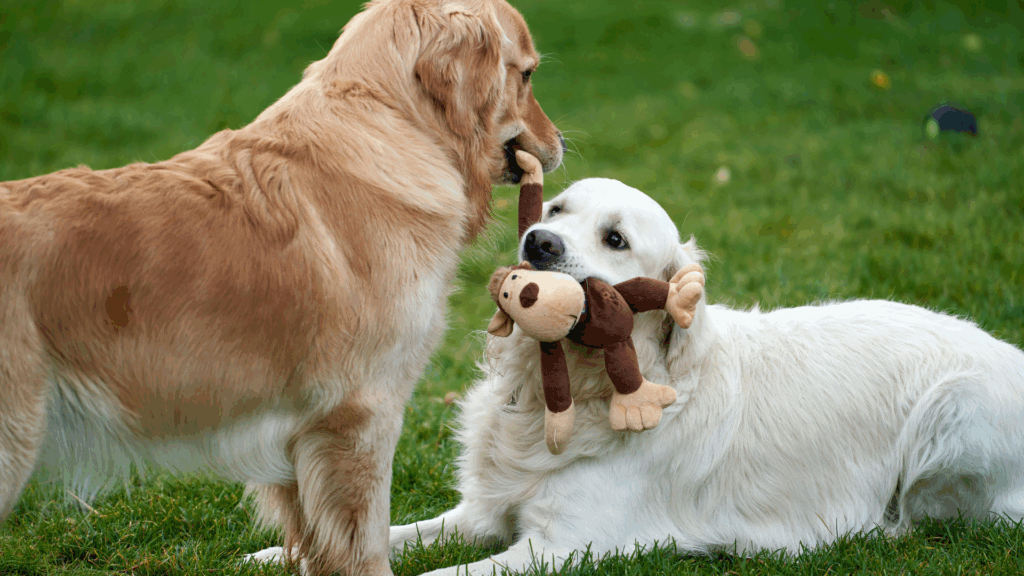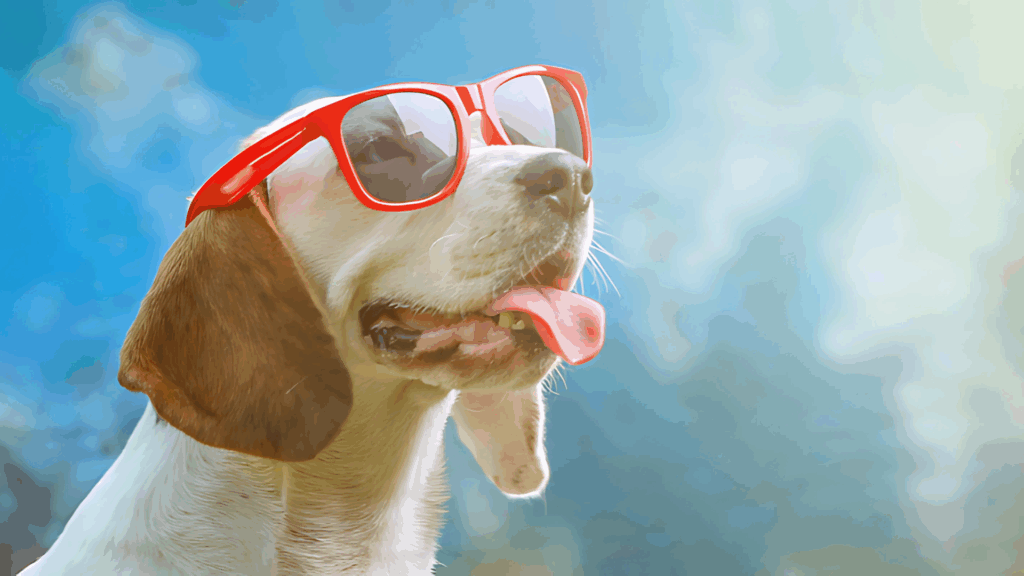Navigating the intricacies of crate training is akin to deciphering a labyrinth of diverse dog care philosophies. As fledgling dog guardians, the plethora of choices can be overwhelming: should you initiate crate training the instant those little paws prance into your household, or is it wiser to let them first soak in their new environment?
Does a crate replete with toys spell ‘fun and comfort’, or is a pared-down, essentialist setup more conducive to calm? Then comes the dilemma of addressing their plaintive cries: is it a call for help or a fleeting tantrum?
And, while some swear by the crate as a sanctuary, others see merit in its occasional role as a brief “cool-down” zone. Add to this the debate over the crate’s ambiance: a cozy, covered retreat or a panoramic vantage point? Dive in with us as we unpack these conundrums, offering clarity and guidance on tailoring the crate training experience to best suit your furry friend.
1
Crate Training: Start Early vs. Wait It Out ⏳
When you start crate training early, you’re tapping into that perfect age for learning. Puppies are like little sponges at a young age! They adjust to new routines and experiences quickly, making the training process smoother.
Introducing the crate early can also help your puppy start to self-soothe and control themselves. They’ll begin to recognize the crate as their space, making it a familiar and comforting environment for them.
On the flip side, waiting can sometimes allow your puppy to develop habits that are tough to break later on. By starting early, you can guide them into routines and habits that will be beneficial in the long run.
But there are merits to waiting a bit too. Moving to a new place can be a lot for a puppy. Allowing them some time to explore and get comfortable in their new home can make the transition less overwhelming.
This time also lets you bond with your puppy, helping to strengthen the connection between you both. By letting your pup familiarize themselves with their new surroundings, you provide them with a sense of security. Once they feel safe and settled, introducing the crate can be a more comfortable experience for them.
✔️ Be the Boss Dog Training Recommends:
We recommend initiating crate training as soon as the little pupper is around 8 weeks old. Think of it as introducing a toddler to their first cozy bedroom.
When you start this early, you’re essentially laying down the foundation for a secure and confident adult dog. Just as we humans thrive on routine and predictability, dogs, especially puppies, find comfort in knowing what to expect.
By introducing a crate early on, you’re setting clear boundaries and creating a safe haven for them. This can work wonders in preventing separation anxiety, a common issue many dog owners face.
Moreover, an early start in crate training can boost your dog’s confidence. They’ll learn that their crate is their special place, a retreat where they can relax and have some “me-time” (or should we say, “pup-time”? 😉). This assurance can lead to a more relaxed and well-adjusted adult dog.
But it’s not just about the pups! The humans in the household also benefit. With a puppy safely in its crate, you can carry on with your daily tasks, chores, or even that Netflix binge-session without the constant worry of what mischief the puppy might be getting into.
And let’s face it, puppies, with their insatiable curiosity, can sometimes land themselves in sticky situations. An unsupervised pup might chew on something harmful or ingest something they shouldn’t, risking injury or illness. Crate training provides that protective barrier, ensuring they’re safe even when you can’t keep a constant eye on them.
*********
2
Toys Inside the Crate : Yea 👍 or Nay 👎?
Some dog owners love the idea of turning their dog’s crate into a bustling mini play haven, jam-packed with toys. The logic is pretty straightforward. Having toys in the crate can keep our furry pals entertained, breaking the monotony of just sitting or lying around.
Picture yourself in a room with absolutely nothing to do – sounds a tad boring, doesn’t it? For many dogs, their toys are more than just playthings. They act as comfort items, kind of like how some of us humans have our go-to comfort food or a beloved blanket.
Moreover, toys can be multifunctional. While chew toys are fantastic for promoting dental health, puzzle toys mentally challenge our dogs, offering both entertainment and skill-building in one go.
However, as with most things in life, it’s not all sunshine and rainbows. There are potential downsides to consider. Safety, of course, is paramount.
Toys, especially if they break or degrade, can pose a risk if parts are ingested. And let’s not forget about space – cramming a crate full of toys might leave our doggo feeling a bit squished.
Overstimulation is another concern; a crate brimming with toys might keep some pups more on their toes than on their haunches, feeling relaxed.
On the other hand, some believe in the philosophy of minimalism when it comes to crates. For them, a crate isn’t a playroom but more of a peaceful, serene retreat.
The idea is to keep it simple, emphasizing its primary role as a resting place, a little like a personal zen garden or a calming spa for our pets. A clear advantage here is safety. With fewer items in the crate, there are fewer risks to contend with.
The absence of toys might also send a clearer message to our dogs: the crate is a place to wind down and chill out. Yet, this approach too has its challenges. A crate devoid of any entertainment might come off as unappealing to some dogs, making them less enthusiastic about spending time in there.
Furthermore, for dogs who see certain toys as security blankets, a crate without them might feel a tad incomplete or even anxiety-inducing.
✔️ Be the Boss Dog Training Recommends:
Our answer, especially for those initial weeks or months of crate training, is a gentle “not just yet.” Here’s our reasoning: The crate should first and foremost be a place of relaxation and rest for our canine companions.
Think of it like us trying to sleep with a blaring TV or radio in the background – it can be a bit distracting, right? Toys, especially for those curious puppies, are like mini theme parks for their brains. They’re stimulating, exciting, and often irresistible. 🎡🧸
By keeping the crate toy-free during the initial training phase, we’re setting a clear intention for our pups: “This is your zen space.” 🧘♂️🐕 It’s like their very own mindfulness retreat where they can wind down, breathe, and take a break from the exhilarating puppy world outside.
When they step (or hop) into their crate, they get the cue to calm down, and over time, this routine can instill a sense of peace associated solely with their crate.
But hey, we’re not party poopers! 🎉 Once your puppy or dog has fully embraced the art of crate relaxation, and you’re confident they’ve understood the crate’s primary purpose, that’s your cue.
Feel free to introduce toys and treats! They can be great companions in the crate, especially if you’re away for a longer period or just want to give your furry friend a little surprise. Just remember to ensure that any toy or treat you introduce is safe for unsupervised play or consumption.
*********
3
To Respond or Not to Respond to Our Pups’ Crate Whining? 🐶🎵
On one paw, there’s the “Ignore Whining” camp. Advocates believe that if you give in to your dog’s whining every single time, you might inadvertently be reinforcing that behavior. In essence, your dog learns that whining equals attention from you, and voilà, you’ve got yourself a furry little opera singer every crate time.
And, let’s be honest, consistency is key in training. If you always ignore the whining, your dog might eventually understand that their vocal performances won’t change their crate situation, leading them to settle down faster.
However, on the flip side, if you consistently ignore your dog, you might miss some genuine signals of distress or discomfort. What if that whining isn’t for attention but a sign that they’re really not okay? 🤔
Swinging the doggy door in the other direction, there’s the “Respond to Discomfort” philosophy. Proponents argue that if a dog is consistently whining in the crate, there might be a real reason behind it.
Maybe they’re in pain, the crate’s too hot or cold, or perhaps there’s something poking them. By checking on them, you’re ensuring their comfort and safety. 🐾❤️ Trust is built on mutual understanding, and your pup knowing you’re there for them, especially when they’re in distress, can strengthen your bond.
But, and there’s always a “but,” there’s a caveat. Responding every single time can blur the lines between genuine distress and attention-seeking behavior. If Fido learns that a little whimper gets him out of the crate and into your arms, he might just put on a show for some extra cuddle time. 🎭
✔️ Be the Boss Dog Training Recommends:
Now, while it might be tempting to immediately scoop up your pup and shower them with cuddles every time they whine (because who can resist that adorable face?), we believe in a slightly different approach. Instead of simply placating the whining, it’s essential to understand and help your pup work through the root causes, be it anxiety, fear, or just plain old puppy mischief. 🐾❤️
Here’s the thing, though: dogs, just like humans, are unique individuals. What works for a boisterous Beagle puppy might not sit well with a timid Tibetan Mastiff. Factors like age, breed, temperament, and even past experiences can dramatically influence how a pup reacts and what strategies would be best to help them. And that’s where our expertise comes in! 📞🐕
Because we truly care about setting both you and your pup up for success, we wholeheartedly recommend taking advantage of a FREE phone call with us. It’s not just about generic advice; it’s about tailoring our suggestions to suit your pup’s specific needs. This ensures that the guidance you get isn’t just one-size-fits-all, but truly tailored, enhancing the chances of it working wonders. After all, every dog deserves an approach as unique and special as they are!

*********
4
Positive Associations Only…or Time-Out Space in the Crate? 📦🐾
In the sunny corner, we have the “Positive Associations Only” ideology. Supporters firmly believe that a dog’s crate should be its personal slice of paradise, where every moment is wrapped in positive vibes and tail wags. 🌈🐶
By maintaining the crate as a consistently positive space, your pup is more likely to be drawn to it, viewing it as their cozy den. This makes crate training generally smoother, as they’ll voluntarily wander in, expecting treats, toys, or maybe a good ol’ nap.
But here’s the catch – if the crate is always tied to happy thoughts, you might find yourself in a bind when you need a safe space to put your dog for a momentary cool-down.
Now, flipping over to the shaded lounge, we find the “Time-Out Space” proponents. For these folks, while the crate is primarily a safe haven, it can occasionally moonlight as a brief pause button on doggy mischief. 🛑🐾
By allowing the crate to be a short-term time-out zone, it provides a clear signal to the dog that certain behaviors are a no-go. This can help in managing and redirecting unwanted behaviors, offering a clear structure in training.
However, if the time-out card is played too often or without clear reason, there’s a risk. Your four-legged friend might start associating the crate with negative feelings, making them wary or even fearful of it. And trust me, a distrustful dog can make crate training a Herculean task! 💪🐕
✔️ Be the Boss Dog Training Recommends:
So, time-outs. They might bring back memories of childhood, perhaps sitting in a corner reflecting on that vase you broke. For us humans, time-outs can be effective because we have the ability to connect our actions with consequences over extended periods. But our lovable furry friends? Well, they’re a different kettle of fish. 🐕🐟
Here’s a nugget of wisdom we’ve picked up along our dog training journey: dogs live in the present. That means when you send Rover to the crate as a time-out, he’s probably wondering, “Is it because of that shoe I chewed… three hours ago? Or maybe it’s because I barked at the mailman yesterday?” The truth is, our canine companions simply aren’t wired to make those extended cause-and-effect links like we do.
For this reason, we always steer clear of the time-out approach, especially when it comes to the crate. Instead, we’re all aboard the “Positive Association” train! 🚂🐾 Think of the crate as your dog’s personal penthouse suite or cozy cabin. It should be a place they associate with good vibes, treats, or just pure relaxation. If not positive, then at least neutral—a place where they can chill out without any particular emotion attached.
Now, when it comes to more complex behavioral challenges (because, let’s face it, every dog has its quirks!), we believe in a dynamic duo approach: combining both positive and neutral associations. This tailored strategy helps ensure that each dog, with its unique temperament and personality, gets the guidance it needs to thrive.
*********
5
To Cover or Not to Cover? 🛏️
Diving into the “Cover the Crate for Isolation” perspective, there’s a certain old-world charm to it. Many believe that our furry friends, with their ancestral lineage tracing back to wolves, have an inherent preference for den-like settings. 🐺🌲
Covering the crate can mimic this environment, offering them a secluded, intimate space, away from the hustle and bustle. This can be especially comforting during loud events, like thunderstorms or fireworks, where the cover acts as a protective shield, muffling noise and reducing stimuli. 🌩️💥 It’s like us snuggling into our beds with the curtains drawn, creating a cocoon of tranquility.
On the flip side, there’s a breezy argument to “Never Cover the Crate.” Proponents here believe in granting their dogs an unrestricted view of their kingdom. 🏰🐶 By leaving the crate uncovered, dogs can observe their surroundings, keeping tabs on family members and monitoring household activities.
This could reduce feelings of isolation, ensuring they remain in the loop, even during crate time. Additionally, in warmer climates or during those balmy summer months, an uncovered crate allows for better airflow, ensuring our pups stay cool and comfy. 🌬️☀️
Yet, there’s a caveat: being constantly exposed can sometimes be overwhelming for dogs, especially if the household is particularly active or if they’re craving some alone time.
✔️ Be the Boss Dog Training Recommends:
When it comes to the question, “To cover or not to cover?” our philosophy is pretty straightforward: let your dog or puppy take the lead (and no, not just on your morning walks!). 🐾🚶♂️ Some dogs absolutely love the added coziness and den-like feel a cover offers, making them feel secure and snug. For others, it might feel a bit too confining or might just tickle their mischievous side.
Now, here’s a scenario we’ve come across a few times: You’ve lovingly covered the crate, picturing your furry friend nestled inside like a burrito, only to find that they’ve pulled the cover in and turned it into their personal DIY project. If your dog has a penchant for redecorating by tearing up or munching on the crate cover, it’s a clear sign that going au naturel (crate-wise, of course!) might be the best route. After all, while creativity is commendable, we certainly don’t want them ingesting bits of fabric or hurting themselves in the process.
*********
In Conclusion
Navigating the waters of dog care, from crate training to understanding their unique quirks, can sometimes feel like plotting a course through uncharted territory. But guess what? You don’t have to go on this adventure alone! 🌍🐾 Our Facebook group, Dogs Unleashed Utah County, is bustling with fellow dog lovers, sharing stories, tips, and those oh-so-adorable puppy pics. It’s the perfect platform to ask questions, share triumphs, or just enjoy a daily dose of doggo delight. 🎉🐶
And if you ever find yourself scratching your head over a doggy dilemma or just need some personalized guidance, don’t hesitate to reach out to us. We’re more than just a resource; we’re a community that’s passionate about everything canine. So, whether you’re a seasoned dog parent or just welcomed a new furball into your home, remember, our pack is here to support you every step, jump, and tail wag of the way! 💬🐕🌟
